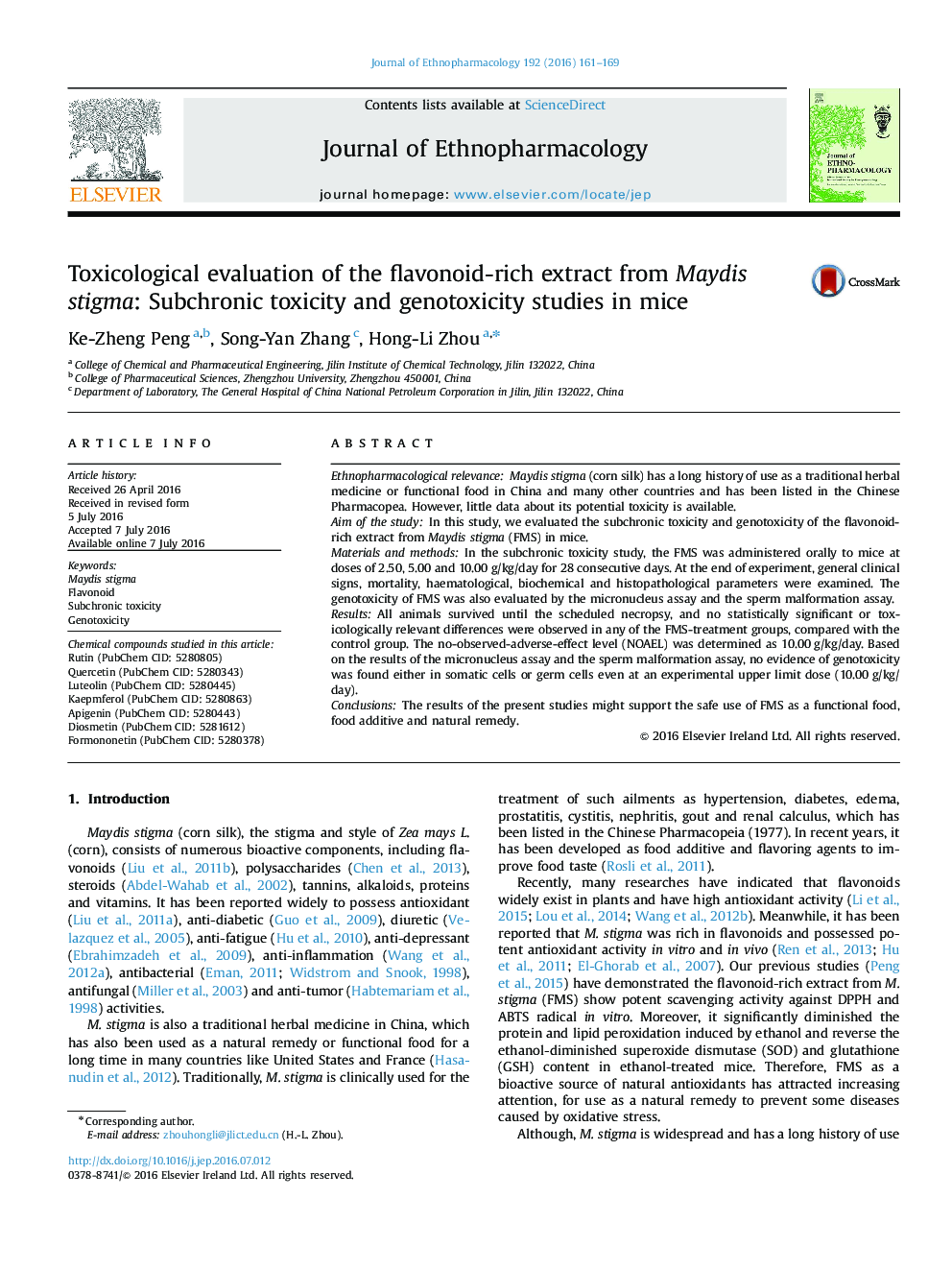| Article ID | Journal | Published Year | Pages | File Type |
|---|---|---|---|---|
| 2544543 | Journal of Ethnopharmacology | 2016 | 9 Pages |
Ethnopharmacological relevanceMaydis stigma (corn silk) has a long history of use as a traditional herbal medicine or functional food in China and many other countries and has been listed in the Chinese Pharmacopea. However, little data about its potential toxicity is available.Aim of the studyIn this study, we evaluated the subchronic toxicity and genotoxicity of the flavonoid-rich extract from Maydis stigma (FMS) in mice.Materials and methodsIn the subchronic toxicity study, the FMS was administered orally to mice at doses of 2.50, 5.00 and 10.00 g/kg/day for 28 consecutive days. At the end of experiment, general clinical signs, mortality, haematological, biochemical and histopathological parameters were examined. The genotoxicity of FMS was also evaluated by the micronucleus assay and the sperm malformation assay.ResultsAll animals survived until the scheduled necropsy, and no statistically significant or toxicologically relevant differences were observed in any of the FMS-treatment groups, compared with the control group. The no-observed-adverse-effect level (NOAEL) was determined as 10.00 g/kg/day. Based on the results of the micronucleus assay and the sperm malformation assay, no evidence of genotoxicity was found either in somatic cells or germ cells even at an experimental upper limit dose (10.00 g/kg/day).ConclusionsThe results of the present studies might support the safe use of FMS as a functional food, food additive and natural remedy.
Graphical abstractFigure optionsDownload full-size imageDownload high-quality image (261 K)Download as PowerPoint slide
